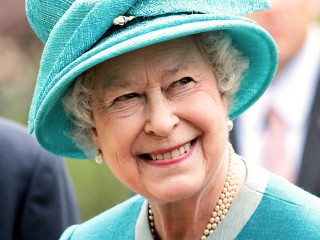
Queen Elizabeth II biography
Date of birth : 1926-04-21
Date of death : 2022-09-08
Birthplace : Mayfair, London
Nationality : British
Category : Famous Figures
Last modified : 2022-09-21
Credited as : queen of Great Britain , Prince Philip, Duke of Edinburgh, Queen Elizabeth death
0 votes so far
Her reign of 70 years and 214 days is the longest of any British monarch, the longest recorded of any female head of state in history, and the second-longest verified reign of any sovereign in history.
Elizabeth was the first child of Prince Albert, Duke of York (later King George VI), and his wife, Elizabeth. She was born by Caesarean section on 21 April 1926 at 17 Bruton Street, Mayfair, London, and was baptised in the private chapel of Buckingham Palace by the Archbishop of York, Cosmo Lang, on 29 May.Her godparents were her paternal grandparents, King George V and Queen Mary; her aunts, Princess Mary and Lady Elphinstone; her great-great-uncle, Prince Arthur, Duke of Connaught and Strathearn; and her maternal grandmother, Cecilia Bowes-Lyon, Countess of Strathmore and Kinghorne. Elizabeth was named after her mother, great-grandmother Alexandra, and grandmother Mary. Her close family called her "Lilibet".
She had a close relationship with her grandfather George V and was credited with aiding in his recovery from illness in 1929. Her only sibling was Princess Margaret, born in 1930. The two princesses were educated at home under the supervision of their mother and their governess, Marion Crawford, who was casually known as "Crawfie". To the dismay of the royal family, Crawford later published a biography of Elizabeth and Margaret's childhood years entitled The Little Princesses. The book describes Elizabeth's love of horses and dogs, her orderliness, and her attitude of responsibility. Such observations were echoed by others: Winston Churchill described Elizabeth when she was two as "a character. She has an air of authority and reflectiveness astonishing in an infant". Her cousin Margaret Rhodes described her as "a jolly little girl, but fundamentally sensible and well-behaved".
When Elizabeth was born, the British Empire was a pre-eminent world power, but its influence declined, particularly after the Second World War, and the empire evolved into the Commonwealth of Nations. Her father, George VI, was the last Emperor of India and the first Head of the Commonwealth. On his death in 1952, Elizabeth became Head of the Commonwealth, and queen of seven independent Commonwealth countries: the United Kingdom, Canada, Australia, New Zealand, South Africa, Pakistan, and Ceylon. During her reign, which at 58 years is one of the longest for a British monarch, she became queen of 25 other countries within the Commonwealth as they gained independence. Between 1956 and 1992, half of her realms, including South Africa, Pakistan and Ceylon (renamed Sri Lanka), became republics.
Elizabeth married Prince Philip, Duke of Edinburgh, in 1947, and the couple have four children and eight grandchildren. In the 1980s and 1990s, the private lives of their children were subject to great press attention, and contributed to increased discontent with the monarchy, which reached its peak on the death of Diana, Princess of Wales, in 1997. Since then, she has recovered public confidence, and her personal popularity remains high.
An extremely popular queen, Elizabeth has traveled more extensively than any previous British monarch. Throughout her reign, expanded media coverage has brought the monarchy closer to the British people. Although the queen, who in public is formal and unemotional, continues to be greatly admired and respected, since the mid-1980s a barrage of tabloid reports about her children and their spouses has seriously tarnished the royal image. In 1992 she celebrated her 40th year on the throne, but it was also a year in which part of Windsor Castle suffered a devastating fire; her son Prince Andrew (b. 1960) separated from his wife, the former Sarah Ferguson (they were divorced in 1996); her daughter, Princess Anne, divorced; and her son and heir to the throne Prince Charles and his wife Princess Diana separated (they were divorced in 1996). Elizabeth's youngest son is Prince Edward (b. 1964). In 1992 Elizabeth, the wealthiest woman in England, agreed to pay income tax for the first time. Although she was widely criticized for her seeming insensitivity in the days following Princess Diana's death (1997), she had regained the public's esteem by the time of her golden jubilee, less than five years later.
Queen Elizabeth II died aged 96 at Balmoral Castle, Aberdeenshire, on 8 September 2022, and was succeeded by her eldest son, Charles III.





















